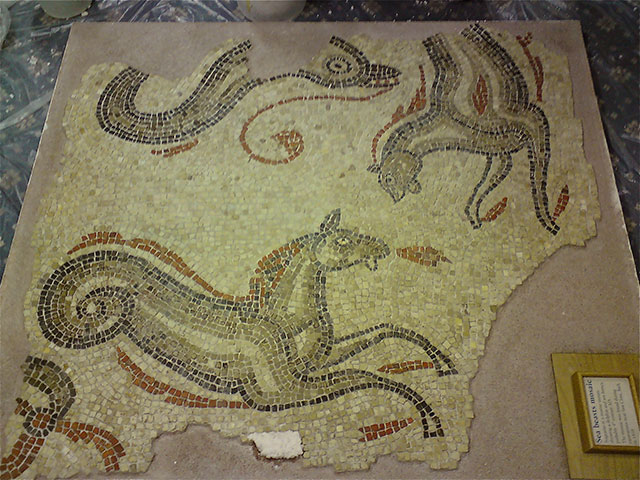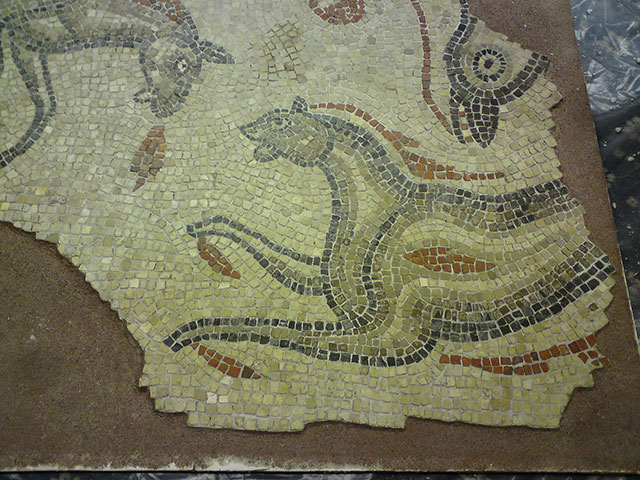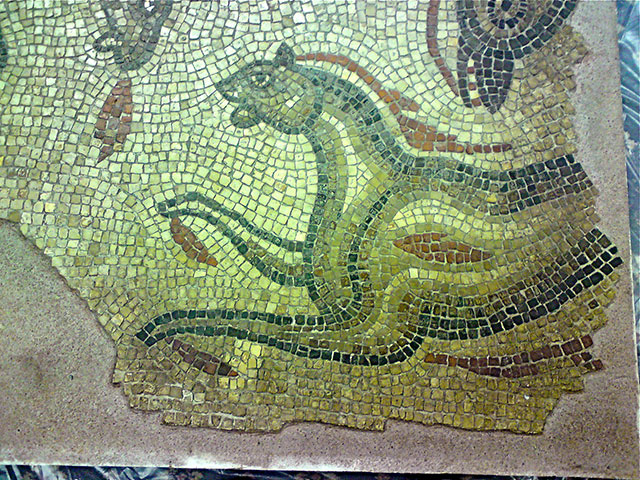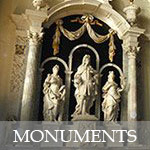Conservation and dirt removal to Roman 'sea beasts' mosaic
This small part of a mosaic shows mythical sea creatures on a background of white lias limestone. A dolphin swims with two hippocamps, animals with the front of a horse but the tail of a fish. Small pieces of locally sourced stone and ceramic tile known as tesserae make up the creatures.

Here ammonium carbonate is added to a acid free paper pulp poultice to gently remove grubby fingermarks and other deposits. This method is often employed to remove carbon deposits from from limestone. The ammonium carbonate added to this poultice mix chemically dissolves the soiling which is then held to the surface of the paper pulp. The cleaning agent and the dirt was then removed with the paper pulp. The mosaic was then poulticed again with a dryer mix without any chemical agent to further draw out any dirt and chemical residues.

Found in 1859 on the site of the Bluecoat School, Sawclose, in central Bath, it was remounted for display purposes a few years ago and now sits in the Roman Bath museum.
The photos below show the mosaic before and after restoration:


